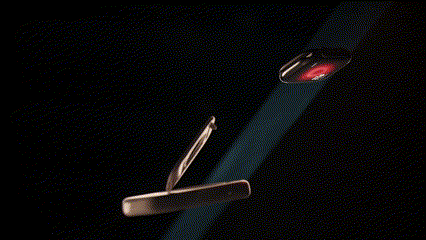
By and large, the iPhone was the successor to the iPod. However, the Apple Watch has picked up some of the music devices’ legacy. Like some of the smallest iPods, it could be worn. And while it lacked the biosensors and health tracking of the Apple Watch, iPods were Apple’s original personal fitness devices, pairing with sensors in Nike sneakers to measure runs. Indeed, some folks even experimented with housings for the 6th generation iPod nano to turn that device with a square touchscreen into a wrist-worn device.
In 2024, the Apple Watch gets to return that touching gesture. TinyPod is an Apple Watch enclosure designed to let you use the Apple Watch off the wrist. Some models even come with a scroll wheel to better mimic the look and user experience of early iPods. Functionally, the reasoning goes, the Apple Watch is a better iPod than the iPod was, boasting a richer app library and internet connectivity via Wi-Fi (which all but the iPod touch lacked) and even optional cellular connectivity (which no iPod ever had). Particularly with smart stacks, the Apple Watch can serve up a host of useful info snippets or functions.
As is typical for new platforms from Apple, the company has extended a wide range of its apps to the Apple Watch. It can make phone calls, use Apple Pay, record voice memos, show emails, navigate with maps, display photos, play podcasts or music on Apple Music, and check texts via messages. Other supported apps include Apple’s News, Find My, and smart home manager applications. Popular third-party apps include Audible, Amazon Music, Spotify, Google Keep, Google Maps, and Microsoft OneNote.
the Apple Watch is a better iPod than the iPod was
That the Apple Watch would even inspire the TinyPod is a testament to the strength of the leading wearable platform that Apple has created, one that can provide just enough functionality to leave your phone behind for a while, particularly if you have one of the larger iPhones. But watchOS isn’t nearly as broad a platform as iOS. Many of Apple’s updates over the past few years have focused on complications or new health-tracking features.
What, then, is the advantage of taking the watch off your wrist and putting it into a case that pays homage to the iPod? The TinyPod’s scroll wheel provides one-handed control of the Apple Watch’s digital crown. However, as the TinyPod is entirely mechanical, the scroll wheel must be physically moved with enough finger pressure to transfer the energy to that native input control. Unfortunately, the surface doesn’t provide enough friction to make that easy. If you fondly remember the buttery smooth sliding of your thumb around the iPod’s wheel, you’ll be disappointed.
The scroll wheel works better with two fingers, turning it like a tiny steering wheel.
The scroll wheel works better with two fingers, turning it like a tiny steering wheel. While this can be fun with a few casual games, especially one inspired by Sega’s classic Out Run, it isn’t ideal in general use. In addition, the scroll wheel can’t be clicked; actions must be activated with the side button. Fortunately, the touch screen remains active and a better option for navigating the watch’s interface. Just be sure to support the back of the watch with your hand, as it’s easy to push it out of the enclosure.
With its mechanical operation, the TinyPod does not have its own battery, nor does it drain the Apple Watch battery as it has no Bluetooth connection. In fact, turning off features such as wrist detection and always-on display helps extend the Apple Watch’s battery life significantly. And since the device’s back is open, you can still conveniently charge the watch with the original Apple charger and most third-party wireless chargers. Still, the enclosed product isn’t particularly thin; it’s thicker than the iPhone in a protective case.
Bottom line
A cheaper TinyPod variant omits the scroll wheel. While that provides better ergonomics than using the Apple Watch bandless, it still doesn’t provide much protection. It turns out that your wrist is a pretty good place to keep the Apple Watch. Those who fondly remember the iPod Classic and Nano will appreciate the TinyPod’s kitsch value.
Those who fondly remember the iPod classic and nano will appreciate the TinyPod’s kitsch value.
However, those who want to use the Apple Watch off the wrist (perhaps because they prefer an analog timepiece, find bands irritating, or engage in activities that could damage the watch) may be better served by a more form-fitting, less expensive case, like this one. There are also more capable alternatives, like the seventh-generation iPod touch, now fading into obsolescence as it is capped at iOS 15 — for those willing to stray from Apple’s ecosystem — small, cheap Android phones with screens under 5”.





